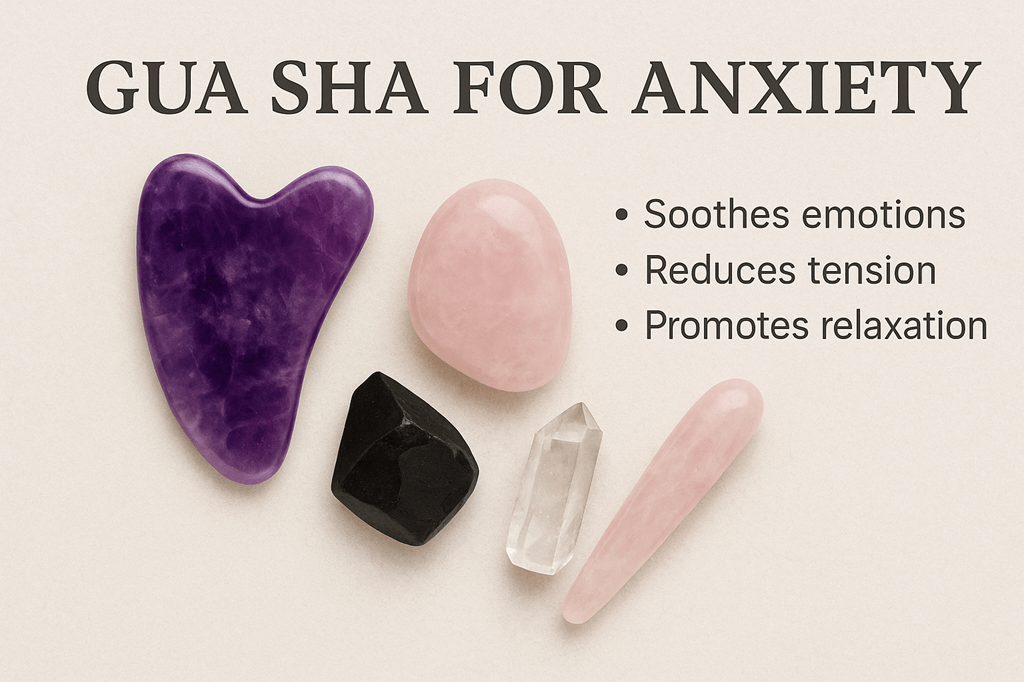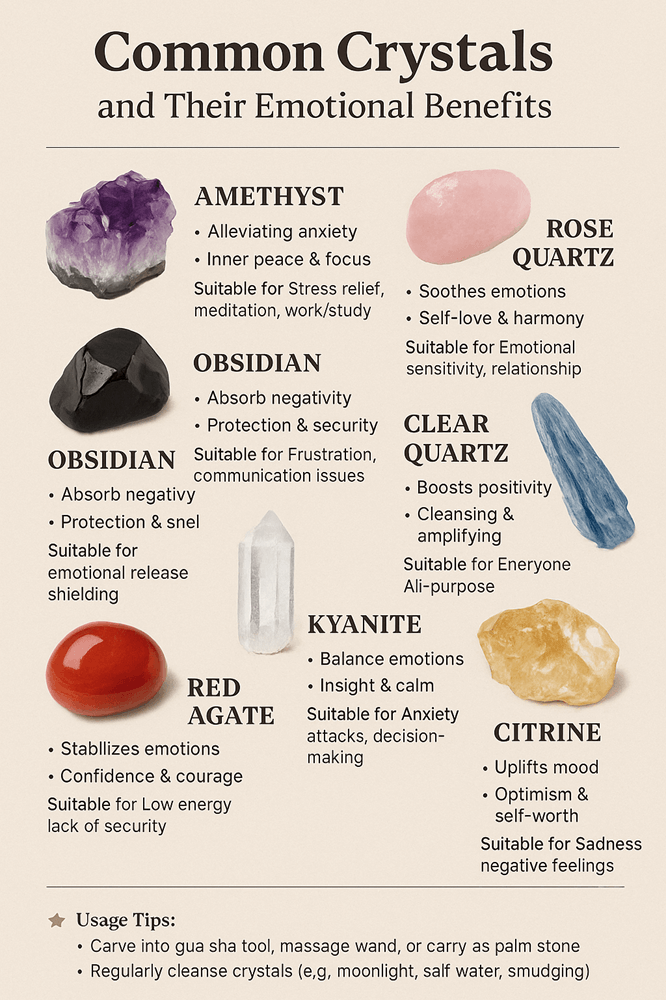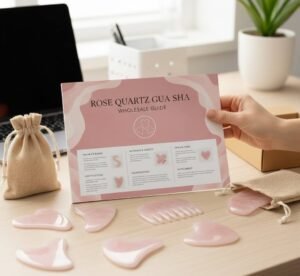
In today’s fast-paced world, anxiety has become increasingly common. From work stress to family responsibilities and social pressure, our mental well-being is constantly being challenged. While a certain level of anxiety can motivate growth, excessive and chronic anxiety often becomes a barrier, sometimes even leading to depression. As a result, more people are turning to natural healing methods to relieve anxiety—and gua sha for anxiety, a traditional Chinese technique, has garnered growing attention for its unique benefits in emotional relief.
- What Is “Gua Sha for Anxiety”?
- How Gua Sha Helps with Anxiety
- How to Use Gua Sha for Anxiety Relief
- Crystal and Stone Tools for Anxiety: Choosing the Right Material
What Is “Gua Sha for Anxiety”?
To understand how gua sha helps with anxiety, it’s important to first understand what gua sha does and why it can be effective.
If you’ve experienced anxiety, you’ve likely also dealt with muscle tension, body aches, or headaches. These symptoms are closely linked to both physical and psychological mechanisms:
1. The Body’s Stress Response: A Biological Perspective
When we feel anxious, our brain’s amygdala sends a distress signal to the hypothalamic-pituitary-adrenal (HPA) axis, triggering the body’s “fight or flight” response—an evolutionary survival mechanism. In the modern world, however, the energy generated by this response often has nowhere to go, leading to:
Elevated adrenaline levels, resulting in faster heart rate and rapid breathing
Tightened muscles, especially in the shoulders, neck, and back
Constricted blood vessels, causing poor oxygen supply to the brain and tension headaches
2. The Mind-Body Feedback Loop
Anxiety is not only a mental state—it also affects and is affected by the body:
Overthinking and excessive worry can keep the nervous system in a constantly alert state
People may unconsciously clench their jaws, hunch their shoulders, or grip their fists, leading to chronic pain
Emotions that go unexpressed are often “stored” in the body—a concept explored in many psychological approaches to somatization
How Gua Sha Helps with Anxiety
Gua sha is especially effective at releasing muscle tension, stimulating circulation, and relieving physical symptoms that accompany anxiety. That’s why gently scraping areas like the shoulders, back, forehead, and temples can help calm the nervous system.
But it’s not just about physical relief. Gua sha also mimics the repetitive, rhythmic motions we instinctively use to calm ourselves—like tapping, fidgeting, or leg shaking. This soothing, mechanical action can offer psychological comfort as well.
How to Use Gua Sha for Anxiety Relief
If you’re familiar with basic gua sha techniques, the process is simple:
Focus on tense areas such as the neck, shoulders, and upper back
Use light, gentle strokes on the forehead, scalp, and temples to reduce mental pressure
Pair the practice with deep breathing or meditation for deeper calming effects
Crystal and Stone Tools for Anxiety: Choosing the Right Material

When it comes to natural therapy, crystals and healing stones are often part of the conversation. Many people believe that different stones resonate with different energy centers (chakras) in the body. By using gua sha tools made from specific materials, you can amplify your healing experience.
Recommended Gua Sha Tools for Anxiety:
Rose Quartz – Soothes emotional tension and may promote better sleep
Amethyst – Supports inner peace and meditation
Obsidian – Known for absorbing negative energy and purifying your emotional space
Combining gua sha with crystals for anxiety merges the benefits of physical relaxation and energy cleansing, creating a holistic calming ritual.
In a world where stress and anxiety have become everyday struggles, many turn to medication for fast relief. While effective in the short term, long-term use of pharmaceuticals can lead to side effects and reduced efficacy due to tolerance.
Gua sha for anxiety offers a natural, non-invasive alternative that not only addresses physical symptoms but also nurtures emotional well-being. When paired with the gentle energy of crystals or healing stones for anxiety, this ancient practice becomes a powerful tool for modern mental health care.
It’s more than just a self-care ritual—it’s a way to reconnect with your body and mind, naturally.






